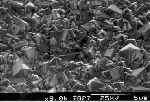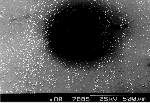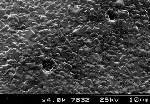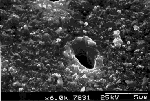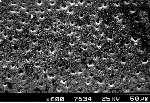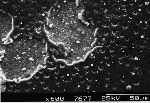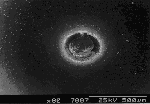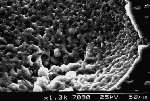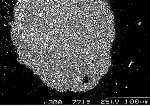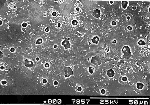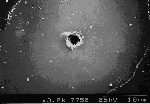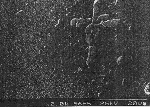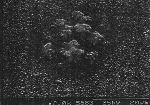 Damage Craters seen after Field Emission Testing of Diamond Films
Damage Craters seen after Field Emission Testing of Diamond Films
CVD diamond and DLC films are routinely tested for field emission of electrons. After testing, the surface of the films often exhibit morphology changes, from small indents to large craters. The creation and evolution of these craters are discussed in our paper in J. Appl. Phys. (1998).

